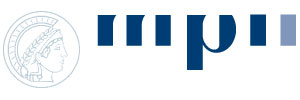


Finding the best makeup for a given human face is an art in its own right. Experienced makeup artists train for years to be skilled enough to propose a best-fit makeup for an individual. In this work we propose a system that automates this task. We acquired the appearance of 56 human faces without makeup and professional makeup. To this end, we use a controlled-light setup, which allows to capture detailed facial appearance information, such as diffuse reflectance, normals, subsurface-scattering, specularity, or glossiness. A 3D morphable face model is used to obtain 3D positional information and to register all faces into a common parameterization. We then define makeup to be the change of facial appearance and use the acquired database to learn a mapping from the space of human facial appearance to makeup. Our main application is to use this learned mapping to suggest the best-fit makeup for novel faces that are not in the database. Further applications are makeup transfer, automatic rating of makeup, makeup-training, or makeup-exaggeration. As our makeup representation captures a change in reflectance and scattering, it allows us to synthesize faces with makeup in novel 3D views and novel lighting with high realism. The effectiveness of our approach is further validated in a user-study.

| The paper (Adobe Acrobat PDF, 14.2 MB). | |
| The video (Windows AVI, Xvid, 61.9 MB). | |
| Eurographics 2011 talk slides (TBD) |
 |
Please note: YouTube only gives a preview of the effect but doesn't reproduce it in professional quality. For full quality, please download the supplemental material .AVI video (69.1 MB). |
TBD.
Kristina Scherbaum, Tobias Ritschel, Matthias Hullin, Thorsten Thormählen, Volker Blanz, Hans-Peter Seidel
Computer-suggested Facial Makeup
Comp. Graph Forum 30 (2) (Proc. Eurographics 2011)
@article{Scherbaum:2011:Makeup,
author = {Kristina Scherbaum and
Tobias Ritschel and
Matthias Hullin and
Thorsten Thorm\"{a}hlen and
Volker Blanz and
Hans-Peter Seidel
},
title = {Computer-suggested Facial Makeup},
journal = {Comp. Graph. Forum (Proc. Eurographics 2011)},
year = {2011},
volume = {30},
number = {2}
}
This work has been partially funded by the Max Planck Center for Visual Computing and Communication (BMBF-FKZ01IMC01).
We thank
This project was one of the two winning projects at the RTT Emerging Technology Contest 2011. We would like to thank the jury, RTT, and Nvidia for their support.
The project is currently getting quite a lot of coverage on all sorts of media. Here is a (random) subset of the outlets that have featured the project: